I like to get some points from bezier curve.I found
Find all the points of a cubic bezier curve in javascript
Position is easy. First, compute the blending functions. These control the "effect" of your control points on the curve.
B0_t = (1-t)^3
B1_t = 3 * t * (1-t)^2
B2_t = 3 * t^2 * (1-t)
B3_t = t^3
Notice how B0_t is1 when t is 0 (and everything else is zero). Also, B3_t is 1 when t is 1 (and everything else is zero). So the curve starts at (ax, ay), and ends at (dx, dy). Any intermediate point (px_t, py_t) will be given by the following (vary t from 0 to 1, in small increments inside a loop):
px_t = (B0_t * ax) + (B1_t * bx) + (B2_t * cx) + (B3_t * dx)
py_t = (B0_t * ay) + (B1_t * by) + (B2_t * cy) + (B3_t * dy)
My code
var ax = 100, ay = 250;
var bx = 150, by = 100;
var cx = 350, cy = 100;
var dx = 400, dy = 250;
ctx.lineWidth = 1;
ctx.strokeStyle = "#333";
ctx.beginPath();
ctx.moveTo(ax, ay);
ctx.bezierCurveTo(bx, by, cx, cy, dx, dy);
ctx.stroke();
var t = 0
var B0_t = (1 - t) ^ 3
var B1_t = 3 * t * (1 - t) ^ 2
var B2_t = 3 * t ^ 2 * (1 - t)
var B3_t = t ^ 3
// override manually *Notice* above
//This is work first and laste point in curve
// B0_t = 1; B1_t = 0; B2_t = 0; B3_t = 0; t = 0;
// B0_t = 0; B1_t = 0; B2_t = 0; B3_t = 1; t = 1;
var px_t = (B0_t * ax) + (B1_t * bx) + (B2_t * cx) + (B3_t * dx)
var py_t = (B0_t * ay) + (B1_t * by) + (B2_t * cy) + (B3_t * dy)
// doesnt work
var t = 0
var B0_t = (1 - t) ^ 3 //*Notice* above should be 1
//Debug (1 - t) ^ 3 = 2 ??
var B1_t = 3 * t * (1 - t) ^ 2 //*Notice* above should be 0
//Debug 3 * t * (1 - t) ^ 2 = 2 ??
var B2_t = 3 * t ^ 2 * (1 - t)//*Notice* above should be 0
//Debug 3 * t ^ 2 * (1 - t) =2 ??
var B3_t = t ^ 3//*Notice* above should be 0 but its 2
//Debug t ^ 3 = 3 ??
var px_t = (B0_t * ax) + (B1_t * bx) + (B2_t * cx) + (B3_t * dx)
var py_t = (B0_t * ay) + (B1_t * by) + (B2_t * cy) + (B3_t * dy)
Appreciate any help thanks
